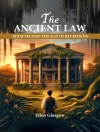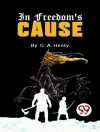Set against the backdrop of a richly imagined medieval world, William Morris’s ‘The Well at the World’s End: A Tale’ weaves a complex narrative that intertwines themes of adventure, love, and the quest for an idyllic existence. Morris employs a lyrical prose style that celebrates nature and humanity, reminiscent of the romantic traditions of the era. The novel is not merely a tale of epic journeys but a profound exploration of the human spirit’s yearning for utopia, reflecting the broader aesthetic and philosophical currents of 19th-century literature, including longing for simpler times amidst industrialization. William Morris, a prominent figure in the Arts and Crafts movement, was deeply influenced by medieval literature and folklore, which is evident in his meticulous world-building and character development. His experiences as a designer, poet, and social activist provided him with a unique perspective on societal progression and the struggle for personal fulfillment. The themes in ‘The Well at the World’s End’ resonate with his belief in an artful life, inviting readers to ponder the nature of beauty and the meaning of true happiness. This novel is indispensable for readers seeking a profound exploration of myth and morality within a fantastical narrative. Morris’s intricate prose and philosophical insights make ‘The Well at the World’s End’ not just a story of adventure, but a timeless reflection on the paths we choose in search of our own ‘well at the world’s end.’
Yazar hakkında
William Morris (1834-1896) was a multifaceted English artist, writer, and socialist, who made a significant contribution to the revival of traditional textile arts and methods of production during the Victorian era. His literary works include poetry, fiction, and essays, and he was a major contributor to the revival of the fantasy genre in the late 19th century, notably with his novel ‘The Well at the World’s End: A Tale’ (1896). This particular book is acclaimed for its rich language and pioneering use of archaic prose, which influenced a generation of fantasy writers, including J.R.R. Tolkien and C.S. Lewis. Morris was a key figure in the Arts and Crafts Movement, and his commitment to the value of craftsmanship and design is evident in his writing, which often interweaves medieval themes with socialist ideals. His work is characterized by an evocative and ornate style and themes of utopianism and romanticism. In literature, Morris is remembered not just for his novels, but also for his translations of ancient and medieval texts. His contributions to design and literature make him a towering figure in Victorian culture and beyond.












